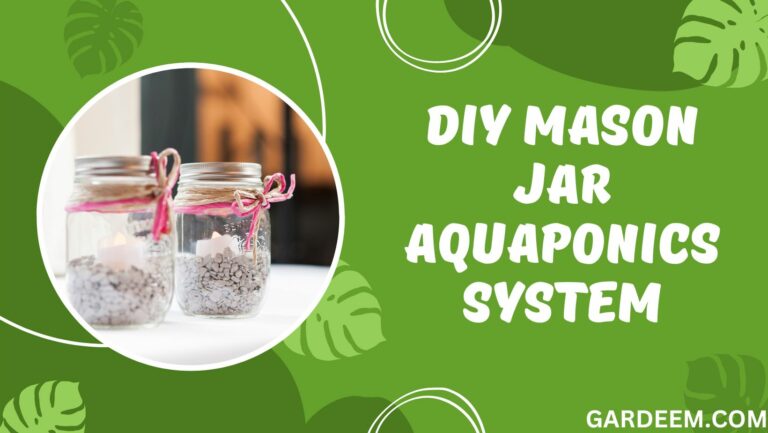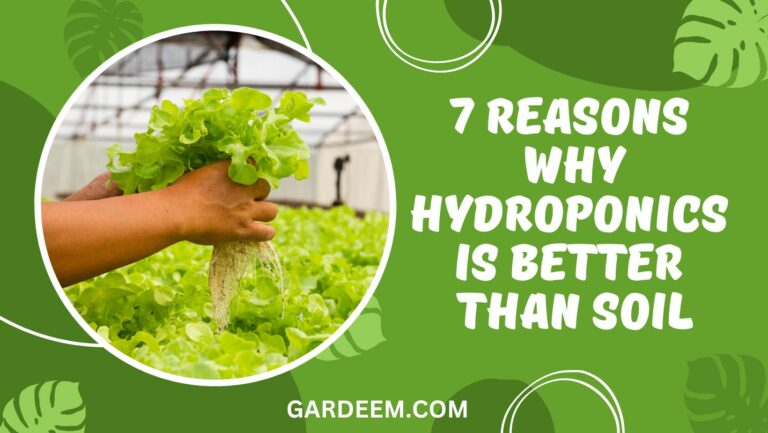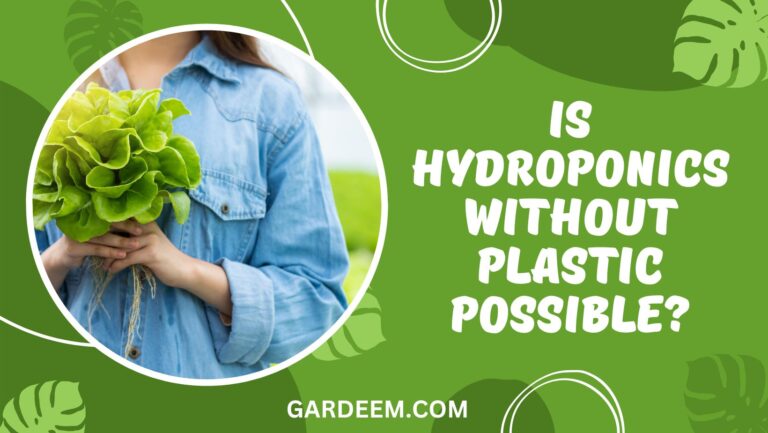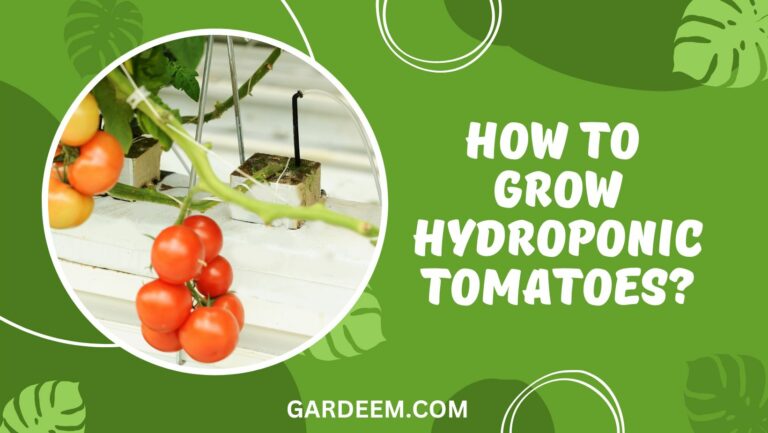
As part of our series on hydroponics, we’ve taken a look at everything from is hydroponics without plastic possible right through to 5 reasons why hydroponics is important and we’ve finally come to answer the big one – can hydroponics feed the world? It’s no secret that I’m a big fan of hydroponics, but hopefully, this post will be an impartial argument for hydroponics.
Let’s get started!
Can Hydroponics Feed The World? Our Pros and Cons
When I first learned about hydroponics it felt like a revelation, the ability to grow crops bigger and faster than in traditional farming was like a lightbulb moment in my mind. I was so evangelical about the method but as I began to tell more people I kept getting pushback with more and more people asking can hydroponics feed the world or is it just a pipe dream?
We’ve touched on some of these pros and cons before but I feel that it might be useful to do a deep dive into each to expand upon the points.
Pros
There are so many upsides to hydroponics and aquaponics that we could write a full post on it. However, the below represent those benefits we believe are most crucial to answering the question can hydroponics feed the world.
Grow anywhere
Up first is the ability of hydroponics to work ANYWHERE. What we’re trying to do with hydroponics is mimic the outside environment but in a way that every part of the system is optimised – from providing the right amount and type of light right through to making sure that plants have the correct level of nutrients for growth.
Water recycling
In this post by Oxfam, they class ‘Production failure’ of crops as the leading reason for famine in Somalia. One of the biggest causes of plants failing is due to a lack of water caused by localised drought.
Within traditional farming, not all the water used to water crops is used by them. In dry regions, a lot of water quite literally falls through the cracks in the soil and goes to waste.
Within a hydroponic system, however, water is constantly being recycled and there’s very little water waste meaning that plants can continuously grow even when water is scarce.
Fewer pesticides
Since hydroponics doesn’t rely on soil, there are significantly fewer pests and plant diseases which means that growers don’t need to rely on pesticides. This is one of the many reasons people cite when discussing if hydroponics can be considered organic.
No Nutrient leaching
While nutrient leaching might seem like an odd term, what it means is that plants don’t need to compete with weeds and other plants for nutrients within the ground. Obviously, this isn’t an issue for hydroponic growers as it’s very rare for weeds to take seed within your grow.
Less Labor
As everything is designed to work in an optimised space and setup you need fewer people to manage the system with many of the traditional tasks like tilling, weeding and watering rendered obsolete.
Year-round growing
Finally, because you bring the optimal outdoor growing conditions indoors, you’re not limited by growing seasons. This means you can constantly grow year-round.
Cons
Okay, so now that we’ve looked at the pros, it’s time to look at some of the negatives. While it’s easy to think of hydroponics as a win-win system there are some valid points that have been raised by critics such as 2015 in The Guardian.
Thankfully many of these criticisms don’t pack the punch they once did thanks to falling technology costs, however, we should consider them all out of fairness.
Expensive Set-Up
While you can certainly grow plants using a passive hydroponics setup using something like the wick system, which requires nothing more than a 2L soda bottle and some wicking material to create a system that can produce enough food to feed, say a small village will need an active hydroponics system to be built and this comes at a cost.
Most passive systems require air stones, water pumps, and led or cfl grow lights.
Over-reliance on electricity
Okay, so this is the undeniable chink in the hydroponic armour – a reliance on electricity to run the pumps and lights.
Things go wrong faster
Because things are so optimised, when things go wrong, they go wrong significantly quicker. This means you need to constantly keep an eye on everything from TDS to electrical current levels in the system.
Waterborne diseases
Finally, unless you’ve really locked down your system hygiene control, you can suffer from waterborne diseases that can quickly spread through your system.

What Is Hydroponic TDS?
Hydroponic TDS stands for Totally Dissolved Solids and is a measure of the number of ions, molecules or particles dissolved in water that can’t be filtered away using a two-micrometer filter.
We use TDS within freshwater environments (which is why it’s important for hydroponics). For saltwater environments we use the term “salinity”, however, it’s essentially the same thing.
Why It’s Important
Ultimately, TDS is a measure of water quality, however, rather than being a measure of pollution it’s actually a measure of the number of solids dissolved within the solution but it won’t tell you which solids are dissolved within the water.
What you’ll generally find is the higher the TDS level the less that can be done with it.
For reference, here are the TDS levels for different water types:
| Type | TDS Range |
|---|---|
| Freshwater | Less than 1000 ppm |
| Brackish water | 1000ppm to 5000ppm |
| Saline water | 15,000ppm to 30,000ppm |
| Sea Water | 30,000ppm to 40,000ppm |
| Brine | Over 40,000ppm |
For growers, knowing the hydroponic TDS of your water means you know how much nutrient solution is in the water, however, it won’t tell you what nutrients are in the solution.
The question of whether hydroponics can feed the world is a complex and multifaceted one. As the global population continues to grow, there is an increasing need for sustainable and efficient methods of food production. Hydroponics, with its potential for high yields, resource efficiency, and year-round cultivation, offers a promising solution. Let’s explore the possibilities and considerations regarding the role of hydroponics in feeding the world.
1. Resource Efficiency
Hydroponics is known for its resource efficiency. Compared to traditional soil-based farming, hydroponics requires less water, less land, and fewer inputs such as fertilizers and pesticides. By maximizing resource utilization and minimizing waste, hydroponics can potentially produce more food per unit of resources compared to conventional agriculture. This efficiency can contribute to feeding a growing global population while minimizing the strain on limited resources.
2. Climate Independence
Hydroponics provides climate independence, allowing for year-round cultivation regardless of the external climate or geographical limitations. By controlling the growing environment, including temperature, light, and humidity, hydroponics enables crop production in regions where traditional agriculture may be challenging or limited. This climate independence can help ensure a stable and continuous food supply, reducing the impact of weather fluctuations and seasonal variations.
3. Vertical Farming and Urban Agriculture
Vertical farming, a type of hydroponic system, holds great potential for increasing food production in urban areas. With the majority of the global population projected to live in cities in the coming decades, integrating hydroponics into urban agriculture can address the challenge of limited arable land. Vertical farms allow for the cultivation of crops in stacked layers, maximizing space utilization and bringing food production closer to consumers. By utilizing unused urban spaces, hydroponic systems can contribute to local food security and reduce the carbon footprint associated with long-distance food transportation.
4. Sustainable and Controlled Production
Hydroponics offers a controlled production environment that allows for optimal plant growth with reduced reliance on external inputs. This controlled environment minimizes the need for pesticides, herbicides, and synthetic fertilizers. Additionally, the closed-loop systems in hydroponics help conserve water by recirculating and reusing it. By adopting sustainable practices and reducing the environmental impact, hydroponics aligns with the principles of sustainable agriculture, contributing to long-term food security and ecological balance.
5. Complementary Approach
While hydroponics has significant potential, it is essential to view it as a complementary approach rather than a standalone solution to global food security. Combining hydroponics with other agricultural methods, such as organic farming and traditional soil-based cultivation, can create a diverse and resilient food system. Each method has its own strengths and limitations, and by integrating them appropriately, we can optimize food production and address the diverse needs of different regions and communities.
Conclusion
Hydroponics has the potential to play a significant role in feeding the world. With its resource efficiency, climate independence, suitability for urban areas, and sustainable production practices, hydroponics offers a promising solution for increasing food production in a rapidly growing global population. However, it is crucial to recognize that hydroponics should be part of a broader approach that includes diverse farming methods, sustainable practices, and equitable distribution systems to ensure global food security. By leveraging the strengths of hydroponics alongside other agricultural practices, we can work towards a more sustainable and food-secure future.
The Bottom Line
So can hydroponics feed the world? Well, despite some of the valid criticism of the method, we still believe that it’s possible. Technology costs will only continue to fall, making hydroponics a very cost-effective farming method.

Hi, I’m Miles, the lead team member behind Gardeem.com. Besides being a passionate grower and writer, I’m a husband, father and grandfather to three! I started Gardeem in 2017 to provide simple and reliable gardening advice to everyone, regardless of their ability levels.






